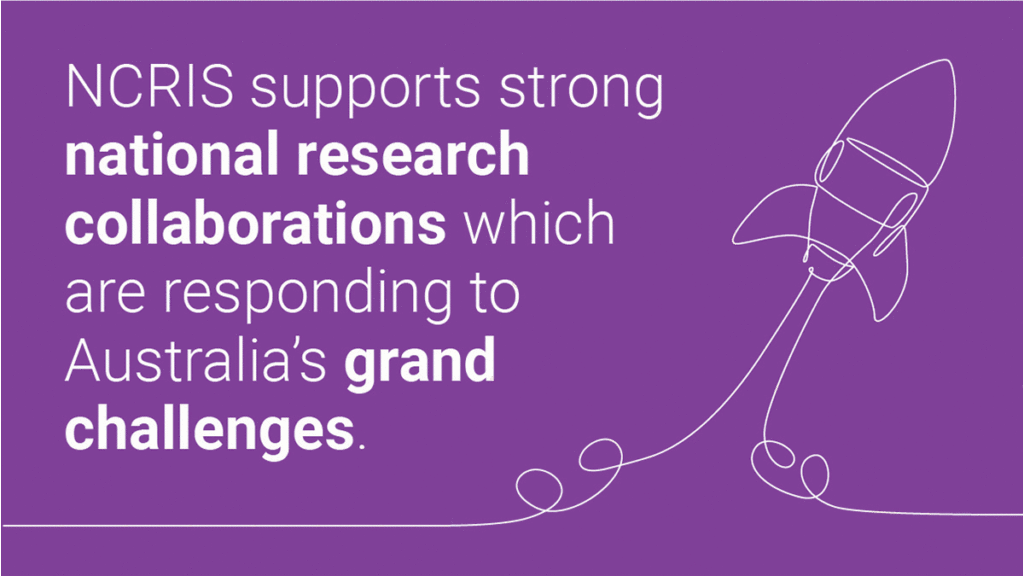Home > News & Events > Economics report on NCRIS released

Click here to view the report.
Leading economists have found that Australia’s network of research infrastructure providers deliver a $7 return for every $1 invested, while underpinning the work that puts the nation’s universities and businesses at the forefront of global research.
Australian science continues to deliver real-world benefit and lead global pursuits in a wide range of areas – the reaction to the COVID-19 pandemic, and 2019-2020 Australian bushfires, as well as developments in quantum tech or bioprinting are all recent examples.
Behind these outcomes, there’s a community of impassioned researchers supported by research enablers – like ANFF – from the National Collaborative Research Infrastructure Strategy (NCRIS). Since 2004, NCRIS has enabled a wealth of research excellence, making it both headline worthy and a critical pillar of the Australian economy. There’s now an economic study to prove it.
Powerful economic findings
Recently, a number of research infrastructure organisations from the NCRIS community commissioned Lateral Economics (LE) to assess the positive impacts of NCRIS for Australian society and the environment. LE’s report has identified ways in which NCRIS funding has and will continue to support the Australian community and economy.
The report found that the direct benefit of investment in NCRIS is calculated to be above a $7 return for every $1 invested, which is a return on investment (ROI) of 7.5:1. The report notes that by 2022-23 the investment could support the employment of an additional 1,750 scientific and technical staff, support staff, and supply chain and industry staff -. These benefits along with others outlined in the report indicate the significant impact NCRIS has made on Australia’s economic security. The report concludes:
‘Based on economic theory and evidence from the time of the GFC to present, we can think of few approaches to providing additional stimulus to the Australian economy that are more cost effective than increasing investment in NCRIS.’
NCRIS delivers
The result is a network of world-class research facilities that are driving innovation and research in Australia and internationally. This network is made up of 22 NCRIS projects, which link over 200 institutions employing more than 1,900 highly skilled researchers and technical experts.
This interconnected infrastructure and the specialist teams who run NCRIS programs allow Australia to meet the key challenges outlined in the UN sustainability goals and tackle some of the biggest scientific and societal challenges we face today. ANFF is one of several facilities, along with Microscopy Australia, the National Imaging Facility, and ANSTO that underpin a wide variety of these challenges by enabling researchers to make breakthroughs in diverse disciplines such as energy, medtech, ecology, agriculture, defence, space, and advanced manufacturing.
Data generated from all this research across a wide range of scales also needs to be stored, curated, managed and analysed – ARDC, Pawsey Supercomputing Centre and the National Computational Infrastructure exist for just this purpose. Below are some examples of how some of the more specific facilities contribute:
- TERN and AURIN contribute directly to land-based environmental monitoring and can help with Australia’s bushfire preparedness.
- IMOS provides rich data from Australia’s surrounding oceans, including early warning of cyclones, ocean acidification and sea level rise associated with climate change.
- PHRN, Phenomics Australia, Bioplatforms Australia, Therapeutic Innovation Australia are helping to improve the health of Australia’s population.
- Astronomy Australia contributes to world leading research on the universe while AuScope improves our understanding of fundamental earth science and enables more effective resource exploration.
- The Australian Plant Phenomics Facility contributes fundamental services in the effort to improve crop yields and resilience with genomic and molecular characterisation performed through Bioplatforms Australia.
Why Australia needs science innovation
Current global challenges have proven the ability of science to respond and to break new ground when faced with a novel challenge. The fact we have vaccines a year into a global pandemic is testament to this. The ability to respond quickly and skillfully requires infrastructure and team work. The challenges are numerous and Australia has, through NCRIS, been building its scientific capability. A flow on effect of this is that investment in NCRIS has also resulted in a stronger and more resilient economy. The Lateral Economics report noted that:
‘The economic impact analysis has revealed that NCRIS stimulus has contributed to supporting the economy during the GFC and the current COVID-19 pandemic.’
Click here to view the report.

